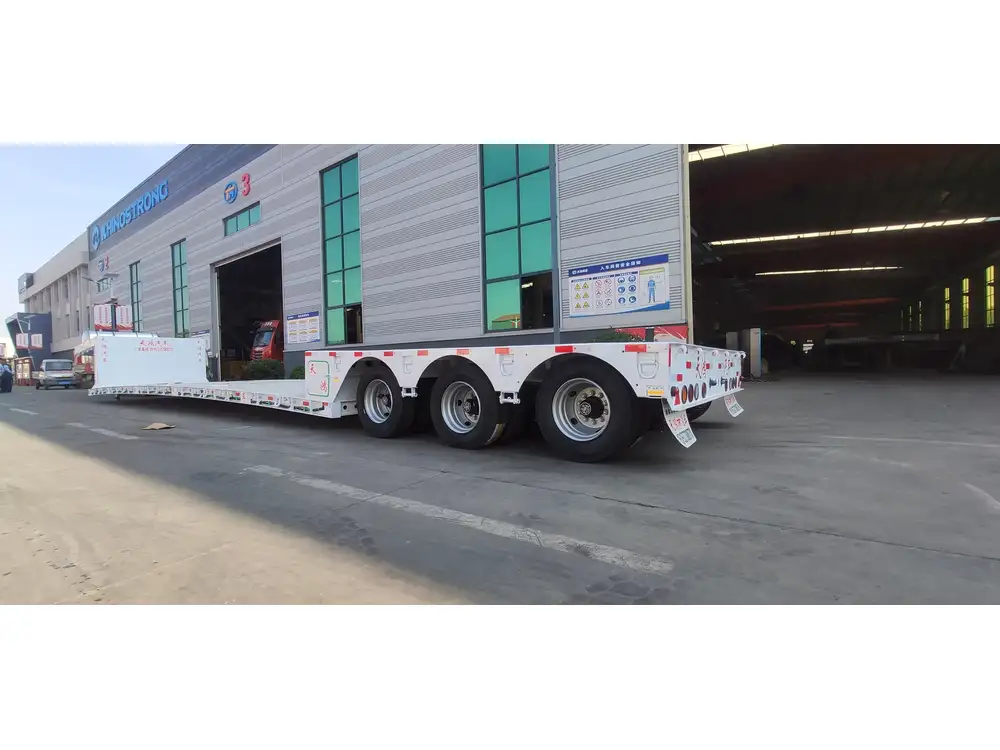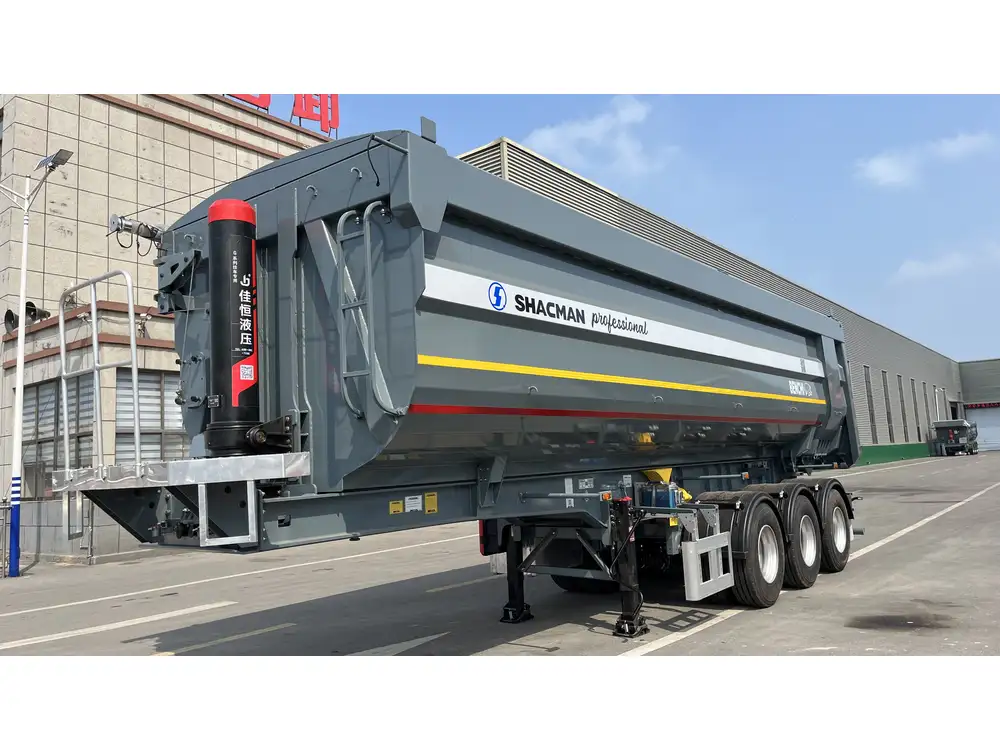Connecting a semi-trailer is a critical skill for truck drivers and logistics personnel. Mastering this task ensures safety, efficiency, and smoother operations on the road. This comprehensive guide will navigate through the intricacies of connecting a semi-trailer, incorporating meticulous detail while addressing common concerns for the best possible outcomes.
Understanding the Components of a Semi-Trailer Connection
Before diving into the connection process, it’s crucial to familiarize ourselves with the components involved:
| Component | Description |
|---|---|
| Fifth Wheel | The coupling device mounted on the tractor unit that connects to the kingpin of the semi-trailer. It allows the trailer to pivot and distribute weight effectively. |
| Kingpin | A steel pin that secures the semi-trailer to the fifth wheel. Proper alignment and engagement are essential for safety. |
| Landing Gear | Adjustable legs on the front of the trailer that support it when detached from the truck. |
| Brake System | The hydraulic or pneumatic system that must be connected for safety purposes. Understanding the types of brakes is essential for proper functionality. |
| Electrical Connections | Wires that connect the trailer’s lighting system to the truck’s electrical system. Proper connections are vital for visibility and legal compliance. |
Step-by-Step Process: Connecting a Semi-Trailer
With a grasp on the components, let’s delve into the actionable steps for connecting a semi-trailer properly.

Step 1: Pre-Connection Checks
Before making the connection, perform a series of checks to ensure everything is in order:
- Inspect the Fifth Wheel: Ensure it is well-lubricated and free of debris. A malfunctioning fifth wheel can lead to severe accidents.
- Check the Kingpin and Trailer: Look for any signs of damage, such as cracks or excessive wear.
- Landing Gear Check: Verify that the landing gear is fully retracted and that the pins are in the locked position.
- Brake and Electrical Systems: Perform a quick inspection of both systems to ensure functional integrity.
Step 2: Positioning Your Truck
Position your tractor unit in line with the semi-trailer:
- Alignment: Ensure the tractor is aligned with the trailer by backing it straight toward the trailer. Utilize mirrors and camera systems for a precise approach.
- Distance: Maintain a short distance (approximately 4-6 feet) between the truck and the trailer for effective maneuvering.
Step 3: Engaging the Connection

Backing and Coupling
With safety measures in place, it’s time to engage the connection:
- Accelerate Gently: Slowly back the truck towards the trailer, ensuring the kingpin heads toward the fifth wheel.
- Listen and Observe: Watch for an audible ‘click’ or feel a slight bump when the kingpin engages in the fifth wheel’s locking mechanism.
Locking the Fifth Wheel
- Visual Confirmation: Check the fifth wheel to ensure the lock indicator shows a secure connection.
- Test Connection: Gently tug the tractor forward slightly and back again to ensure the trailer is securely locked.
Step 4: Connecting the Brake System
The brake connections are paramount for ensuring safe operation:
- Hoses and Lines: Connect the air hoses or hydraulic lines from the truck to the trailer.
- Red Line: Typically connected to the trailer’s supply line (brake application).
- Blue Line: Usually connected to the trailer’s service line (emergency braking).
| Color Code | Function |
|---|---|
| Red | Signal line (brake application) |
| Blue | Service line (emergency braking) |
- Test the Brake System: Before takeoff, conduct a brake check by applying the brakes and observing the semi-trailer’s performance.

Step 5: Electrical Connections
Completing the electrical connections is crucial for compliance:
- Plug the Electrical Connector: Carefully connect the trailer’s electrical plug to the truck’s receptacle.
- Check Lights and Signals: Perform a full lighting check, ensuring brake lights, turn signals, and clearance lights work correctly.
Step 6: Adjusting the Trailer Angle
- Evaluate Hitch Height: Ensure the fifth wheel height is appropriate for the trailer. The trailer should sit level when connected.
- Adjust Landing Gear: If necessary, adjust the landing gear to the desired angle.
Step 7: Final Safety Checks
Conduct a thorough inspection before hitting the road:
- Check Coupling: Reconfirm that the fifth wheel locking mechanism displays a secure connection.
- Brake Functionality: Engage the brakes and test responsiveness.
- Trailer Lights: Verify operation of all lighting indicators.
- Overall Inspection: Complete a walk-around to check for any loose components and ensure secure attachments throughout.

Troubleshooting Common Connection Issues
Despite best efforts, sometimes issues may arise during the connection process. Here are common problems and their solutions:
1. Kingpin Not Engaging Properly
Symptoms: The kingpin may not lock into the fifth wheel.
Solutions:
- Inspect for debris obstructing the connection.
- Verify that the fifth wheel is properly lubricated.
- Position the truck on level ground for a more seamless connection.
2. Air Lines Not Connecting
Symptoms: Air is leaking or hoses are difficult to connect.
Solutions:
- Check for damage or kinks in hoses.
- Apply lubricant to the connectors to ease engagement.
- Ensure the truck’s air system is operational before attempting to connect.

3. Electrical Malfunctions
Symptoms: Trailer lights not functioning.
Solutions:
- Inspect the connector for corrosion or damage.
- Use a multimeter to check for continuity.
- Ensure the truck’s electrical system is operational.
Safety Protocols and Best Practices
Consistently adhering to safety protocols can mitigate risks associated with connecting semi-trailers.
- Always Wear Safety Gear: Ensure you’re wearing appropriate safety equipment such as gloves and a hard hat.
- Utilize Spotters When Necessary: When maneuvering in tight spaces, a spotter can provide guidance and ensure safety.
- Stay Alert for Surroundings: Always be aware of your environment, particularly in busy yards or docks.
Conclusion
Connecting a semi-trailer is a precise task that demands attention to detail, thorough pre-checks, and adherence to safety protocols. By following this comprehensive guide, you will not only ensure that the connection is successful but also maximize safety and operational efficiency on the road. Regular practice, continuous learning, and embracing new technologies will further enhance your mastery over this critical logistics skill.
By implementing these best practices and troubleshooting techniques, you will be well-equipped to tackle any challenge associated with connecting semi-trailers. Remember that the road must always be approached with a safety-first mentality, as the security of the load and the safety of all road users depend on it.



